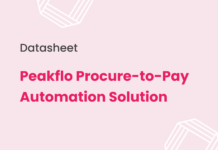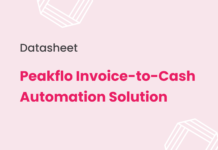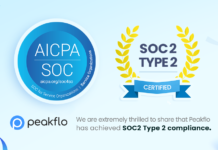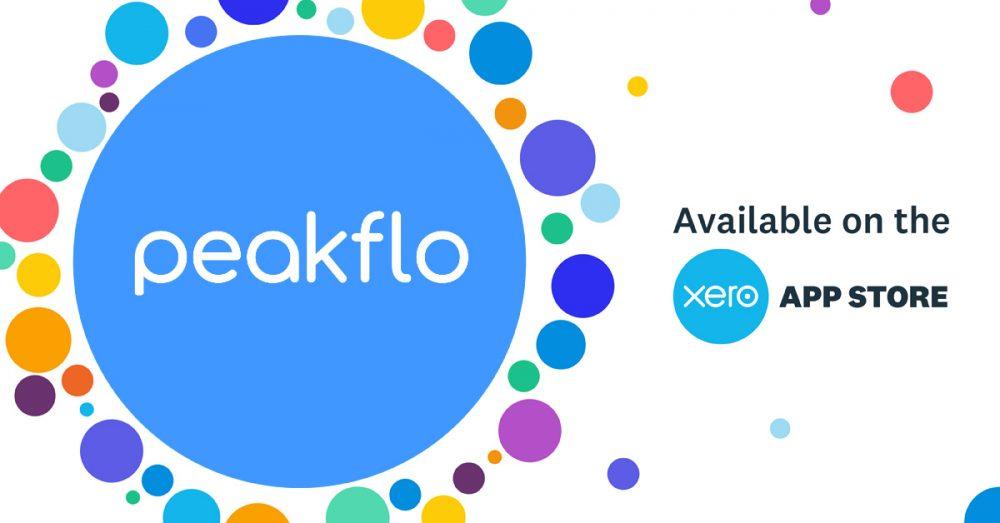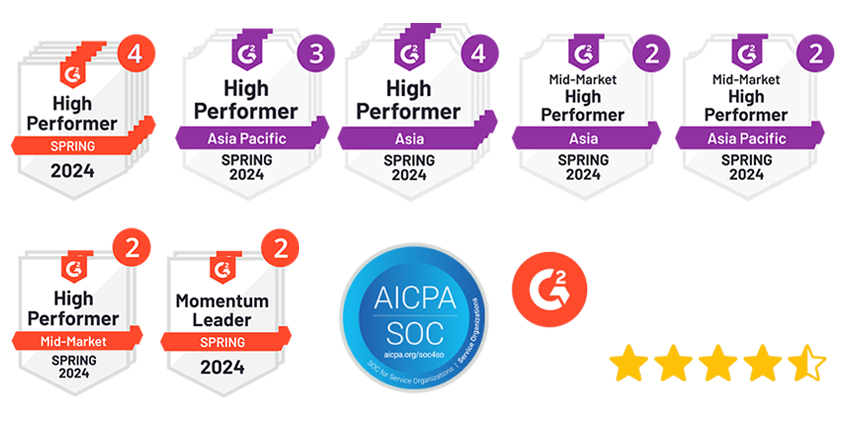McKinsey estimates AI agents could generate $4.4 trillion in annual value for businesses in the long term. These intelligent systems make decisions and perform tasks with minimal human oversight, unlike traditional AI applications.
Software systems known as AI agents do more than process natural language. They include decision-making, problem-solving capabilities, and executing actions in external environments. LLM agents can process multiple types of information, such as text, voice, video, and code at once. These agents surpass conventional chatbots by taking action, adapting, and solving ground problems without human input.
This piece explains AI agents’ inner workings through their three main components: goal initialization and planning, reasoning with available tools, and learning through reflection. You’ll find examples of AI agents in industries of all types and learn how they coordinate workflows, maintain compliance, and optimize operations immediately. The content provides a complete overview of these next-generation intelligent systems, whether you’re just starting or ready to implement AI agents in your business.
What is an AI Agent?
AI agents are software systems that complete tasks and pursue goals for users with unprecedented autonomy. These systems notice their environment, make decisions, and act independently to achieve specific objectives. These rational agents collect data through physical or software interfaces and create next steps based on predetermined goals.
What sets AI agents apart is knowing how to reason, plan, and remember—capabilities that generative AI and foundation models make possible. They go beyond responding to prompts and actively design their workflows to accomplish complex tasks. A contact center AI agent might ask customers different questions, search internal documents, and decide whether to solve issues itself or bring in the core team.
AI agents’ intelligence comes from their multimodal processing abilities. They handle text, voice, video, code, and other data types while showing conversational skills, reasoning capabilities, and decision-making prowess. These systems can also self-improve through reflection and adapt their strategies based on results.
How AI agents differ from chatbots and assistants
The difference between AI agents, assistants, and chatbots comes down to autonomy and capability. They all make use of information from artificial intelligence, but their functionality and independence vary:
- AI agents work independently with minimal human oversight to achieve goals. Once they receive their original prompt, they continue working without further input and break complex workflows into manageable steps.
- AI assistants need more user direction and collaborate directly with humans through natural language interactions. They require prompts for every action and typically suggest options for users to approve rather than acting independently.
- Chatbots follow pre-programmed rules with rigid responses and limited decision-making capabilities. They respond to user queries within defined parameters and lack the adaptability of more advanced systems.
AI agents excel at solving complex, ambiguous problems by analyzing situations, breaking them into subtasks, and planning next steps. They can use external tools and data sources without human intervention, which makes them valuable, especially when you have large datasets or complex decisions.
Why AI agents matter today
AI agents change how businesses operate and solve problems. Their autonomous nature helps handle tasks that once needed substantial human effort, so teams can focus on more creative and mission-critical activities.
Continuous availability stands out as a key advantage—AI agents can operate 24/7 and provide support whatever the time zone differences. Customers know their needs matter on their schedule, not just during business hours.
AI agents connect artificial intelligence with real-life applications. They enable language models to interact with external systems, make decisions, and take meaningful actions. Their persistence, adaptation, and independent operation turn static AI capabilities into dynamic solutions for complex business challenges.
Businesses face increasing pressure to automate complex processes and improve operational efficiency. AI agents offer a promising way forward by combining advanced AI’s reasoning capabilities with practical execution in real-world environments.
How AI Agents Work
Image Source: Translucent Computing
AI agents operate through a sophisticated framework that powers their autonomous decision-making and task execution. These systems follow a well-laid-out cycle of sensing, thinking, and acting. This cycle forms the foundations of how they interact with their environment and accomplish objectives.
1. Goal setting and planning
AI agents need clear goals to function properly. They cannot prioritize actions or measure success without specific objectives. The system turns abstract intentions into concrete tasks, which helps agents work effectively in complex environments.
These agents split complex objectives into smaller, manageable subgoals. A delivery robot might break down “deliver package Y” into tasks like “locate package,” “plan route,” and “avoid collisions”. This approach helps the agent stay focused and efficient.
The agents constantly update their objectives based on new information and changing situations. They create detailed plans that break down into specific tasks in optimal order. This creates the most efficient path toward desired outcomes.
2. Using tools and APIs
Tools and APIs create a vital connection between AI agents and the live data they need. These components enable up-to-the-minute data analysis and let AI systems pull the latest information while interacting with external systems.
Two main approaches exist for tool integration:
- API-based interactions: Agents connect directly with software systems through backend APIs or function calls. This method provides precise data without parsing visual interfaces.
- UI-based interactions: Agents use the software’s interface like humans do – clicking buttons and filling forms. This works when direct programming access isn’t available.
Modern AI frameworks prefer API-based tools because they’re faster and more reliable. These connections help agents work beyond their model limitations. They gain true autonomy through access to external resources.
3. Reasoning and decision-making
Decision-making reveals an AI agent’s true intelligence. The agent reviews inputs, thinks through possible actions, and picks the best path toward its goals after collecting data.
AI agents use different strategies to make decisions:
- Single-objective optimization: Maximizes one specific outcome
- Multi-objective optimization: Balances competing priorities
The agents balance efficiency with effectiveness. They make quick decisions in changing environments. Past events influence current actions through temporal context.
4. Learning from feedback
Feedback plays a significant role in helping AI agents learn and improve. AI systems need feedback to understand if their actions work and what changes they should make.
The feedback guides agents to understand good and bad behaviors. This helps them fine-tune their algorithms and become more effective. Some feedback comes directly through ratings, while other insights come from behavior patterns.
AI agents get better by learning from past interactions through self-improvement. This creates ongoing improvement as the agent evolves based on real-life performance and stays relevant as conditions change.
5. Memory and context handling
Memory lets AI agents store and use past experiences to make better decisions. Unlike basic AI models that handle each task separately, agents with memory keep context, spot patterns over time, and adapt from previous interactions.
AI agent memory works in several ways:
- Short-term memory: Keeps recent inputs for quick decisions, like maintaining conversation context
- Long-term memory: Stores information across sessions to make agents more personal
- Episodic memory: Remembers specific past experiences for case-based reasoning
- Semantic memory: Holds structured facts that agents can use for reasoning
Retrieval augmented generation (RAG) stands out as one of the best ways to implement long-term memory. The agent pulls relevant information from its knowledge base to create better responses.
Different Types of AI Agents
Image Source: CyberArk
AI agents come in different types, each with unique capabilities suited for specific applications. Let’s explore how these agents work and where they fit best.
Reactive vs Proactive Agents
Reactive agents respond only to their environment’s current state. These agents process inputs and generate outputs without storing past interaction data. They follow predefined rules or responses and work best with simple, predictable tasks. To name just one example, a basic thermostat that activates heating when the temperature drops shows reactive behavior.
Proactive agents look ahead and plan for future events. They study past data, spot patterns, and modify their actions. These agents don’t wait for instructions – they take action based on predictive analysis. A product recommendation system shows this proactive approach. It learns from your previous purchases to give customized suggestions.
Utility-based and learning agents
Utility-based agents evaluate outcomes and choose options that give the best overall results. Unlike goal-based agents that pursue specific targets, these agents weigh multiple factors and give utility values to each possible outcome. Self-driving cars demonstrate this approach. They balance speed, safety, and fuel efficiency.
Learning agents get better over time as they adapt to new data and experiences. They use four key parts: a performance element that decides actions, a learning element that builds knowledge, a critic that gives feedback, and a problem generator that explores new possibilities. Customer service chatbots use this approach. They improve their responses based on each interaction.
Autonomous vs collaborative agents
Autonomous agents work on their own with little supervision. These systems range from Level 1 (basic rule-following) to Level 4 (complete independence). At the highest level, they set goals, adapt to results, and pick their tools. True autonomous agents can think through problems and pursue goals without human guidance.
Collaborative agents team up in multi-agent systems (MAS). Here, multiple agents work together toward shared or individual goals. These systems need communication protocols to share information and coordination tools to line up their actions.
AI virtual workers and copilots
AI virtual workers act as specialized tools built for specific tasks. They’re different from basic chatbots. These agents tackle complex problems through autonomous decision-making and execution.
AI copilots work alongside users through large language models. They offer context-aware help, handle routine tasks, and uncover evidence-based insights. AI Voice Agents show this in action. They handle calls, reach out to customers, and manage queries naturally. These agents connect with ERP systems and know when to bring in human help.
AI Agent Examples Across Industries
AI agents now handle tasks that once needed substantial human input in businesses of all sizes. These intelligent systems reshape core business operations in remarkable ways.
Marketing and campaign automation
AI agents have become valuable partners in marketing teams worldwide. Yum Brands (owner of Taco Bell, Pizza Hut, and KFC) uses AI agents that customize marketing messages automatically based on location, buying patterns, and preferred time of day. The systems test and optimize email promotions continuously, which leads to better customer involvement and more repeat business. Best Buy has integrated Google’s Gemini to run a virtual assistant that customizes customer interactions at every touchpoint.
Procurement and vendor selection
AI agents optimize vendor selection through analysis of past data, performance metrics, and market conditions. The technology reviews potential suppliers based on reliability, affordability, and contract compliance. A recent IBM survey shows 64% of CSCOs and COOs believe generative AI reshapes their supply chain operations.
Agentic Workflows support many use cases: accounts payable (PO-matching, vendor onboarding), AR (invoice submission, cash application), anomaly detection, approvals, and expense management. The process works like this: Users record their screen workflows with voice explanations. Peakflo AI analyzes the recording, breaks tasks into steps, and creates an automated workflow. The system runs tasks through LLM-driven logic, API/ERP integrations, and smart decision-making. It learns from exceptions continuously to make execution paths better.
HR and employee onboarding
AI agents reshape human resources, especially in employee onboarding. IBM’s AskHR tool automates more than 80 common HR processes and handles 10.1 million interactions yearly. This saves 50,000 hours and USD 5 million each year. These agents coordinate custom task lists, send reminders automatically, and adjust workflows based on role, region, and contract type.
IT and cybersecurity
AI agents serve as crucial defenders in cybersecurity. CrowdStrike’s Charlotte AI Detection Triage works twice as fast with 50% less computing power, which reduces alert fatigue substantially. The systems analyze alerts, gather tool context, figure out root causes, and act on findings instantly.
Sales and customer support
AI agents solve customer support issues without human help. Camping World saw customer engagement rise 40% after adding virtual agent technology. Wait times dropped from hours to just 33 seconds. Some AI agents now solve up to 65% of customer questions completely, even managing complex conversations effectively.
How AI Agents Use LLMs and Tools
Image Source: Kanerika
AI agents transform static language models into dynamic, autonomous systems through their sophisticated architecture. A closer look at how these elements work together reveals the technical brilliance behind these intelligent tools.
Role of large language models (LLMs)
LLMs act as the “brain” or central controller of AI agents and handle reasoning, planning, and decision-making processes. These models have evolved from standalone assistants into dynamic components that arrange complex workflows. They provide natural language understanding and generation capabilities that help agents interpret requests and produce coherent responses.
LLMs stand out because they know how to break down tasks, create plans, and critique themselves, much like human thought patterns. In spite of that, LLMs face some limitations. They struggle with simple math, logic, and knowledge beyond their training data without extra support.
Tool calling and external APIs
Tool calling lets AI agents interact with external systems. This bridges the gap between language processing and real-life functionality. Yes, it is this capability that changes LLMs from passive text generators into proactive digital agents that can execute complex workflows.
APIs connect AI agents to live data sources and provide access to real-time intelligence such as financial updates, weather information, and search results. APIs help agents connect with external services and tools that boost their overall functionality. The agent recognizes when it needs external help, selects the right tools, and formats queries correctly.
Memory and context management
Memory systems let AI agents store and recall past experiences. This creates a foundation to make better decisions. Unlike traditional AI systems that process each task separately, agents with memory maintain context across interactions.
AI agent’s memory has several types:
- Short-term memory is used to make immediate decisions in conversations
- Long-term memory is used to store information across different sessions
- Episodic memory is used to recall specific past experiences
- Semantic memory is used to store structured factual knowledge
Memory design faces a major challenge in making retrieval efficient. Too much data storage can slow down response times. Techniques like retrieval augmented generation (RAG) help agents fetch only the most relevant information from knowledge bases.
Benefits of Using AI Agents
AI agents bring concrete benefits that go way beyond theory and create noticeable improvements in business operations. These smart systems add value by making businesses more efficient, precise, and adaptable.
Automating complex tasks
AI agents handle repetitive, time-consuming tasks with amazing speed and accuracy. These systems take care of work that people would normally do. This makes operations faster and more economical while being easy to scale. Teams can focus on strategic projects when AI agents handle routine work. This approach helps companies accept new ideas and work more efficiently. A consumer goods company shows this perfectly. They used AI agents to change their global marketing campaign process. What once needed six analysts working for a week now needs just one employee with an agent. The results come in under an hour.
Improving decision-making
AI agents can analyze huge amounts of data in seconds – something that’s nowhere near human capability. Quick analysis leads to faster insights and immediate support, which becomes crucial in high-pressure situations. AI-powered fraud detection systems, to name just one example, check thousands of transactions every second. They spot unusual patterns before fraud becomes a bigger problem. These systems help cut down errors and improve decisions by applying consistent logic. Banks have seen great results – AI agents cut fraud by 40% through immediate transaction pattern analysis.
Enhancing personalization
AI agents excel at creating personalized experiences. They look at user data, from browsing history to social media activity and buying patterns. This helps them suggest products that match people’s priorities. Customers become more satisfied and loyal thanks to this tailored approach. Companies that use AI-driven personalization typically earn 40% more than those who don’t. AI can predict what each customer needs, adjust touchpoints automatically, and make the customer’s experience smoother in real time.
Reducing operational costs
The financial benefits of AI agents are clear. Companies typically cut their operational costs by 15-25% after implementing AI agents. Manufacturing companies save about $300,000 yearly on inventory while cutting production waste by 25%. A leading global bank’s story shows these benefits clearly – they used AI virtual agents to slash costs to one-tenth of what they were. The numbers make sense, considering 31% of consumers think AI is just a normal part of their banking experience.
Scaling business processes
AI agents help businesses grow without needing more resources. They work without salaries, benefits, breaks, or sleep, which makes them valuable assets for scaling. AI agents adapt to new business needs in all types of industries. They handle bigger workloads and make both tasks and people more productive. Companies can grow their operations without seeing the same growth in overhead costs. IT departments showcase this benefit well – AI agents have boosted productivity by up to 40% when updating old technologies.
Risks and Best Practices
Image Source: LeewayHertz
AI agents have powerful capabilities, but they come with several challenges that need systematic risk management. Organizations must understand these risks and put appropriate safeguards in place to deploy AI responsibly.
Common risks: feedback loops, data privacy, model drift
Feedback loops happen when AI systems train on their own outputs. This creates a self-reinforcing cycle that hurts performance. Research published in Nature shows AI models trained on their own content show a “narrower range of output over time”. The biggest problem leads to “model collapse,” where AI’s ability to generate diverse and accurate content declines substantially.
Data privacy risks increase with AI agents because they need access to sensitive information to work autonomously. About 53% of organizations say data privacy is their top concern with AI agent implementation. AI agents could expose personal information without meaning to, either through direct leaks or by making adversarial attacks like prompt injection possible.
Model drift is a vital challenge that shows how AI models perform worse over time. Scientific Reports points out that 91% of ML models degrade over time. This happens because real-life data is different from training data, which makes predictions less accurate as conditions change.
Best practices: human oversight, activity logs, unique identifiers
Human oversight plays a key role in AI agent deployment. Good oversight helps humans understand the system’s capabilities, spot anomalies, prevent over-reliance, and step in when needed. Organizations should use tiered oversight where routine tasks run on their own while complex decisions need human review.
Activity logs create needed transparency in AI agent operations. Complete monitoring tracks everything an agent does—its tasks, data access, and integrations. These logs help detect unauthorized activities before they become security problems.
Unique identifiers let organizations track AI agent actions precisely. Each agent operation should have its own distinctive ID. This helps trace decision paths, maintain accountability, and find the source of any issues.
Ensuring ethical and secure deployment
Ethical deployment needs the right balance between automation and human involvement. Teams should start with lower-risk contexts before moving to sensitive applications. This lets them watch agent behaviors, understand data flow patterns, and spot potential governance gaps without putting sensitive information at risk.
Setting up proper guardrails helps control data privacy and reputation risks. These include relevance classifiers that keep responses on-topic, safety classifiers that detect unsafe inputs, PII filters that prevent personal information exposure, and moderation systems.
Businesses must create clear policies for AI agent use, implement resilient security measures, and keep human intervention mechanisms ready for high-risk actions.
How to Implement AI Agents in Your Business
Organizations need a strategic approach that balances new ideas with practicality when implementing AI agents. Your organization can maximize benefits and minimize risks by taking well-planned steps toward integration.
Start with pilot use cases
Building AI agents requires you to begin with the smallest possible task. This focused approach lets you adjust for errors and build on successes. To name just one example, train your agent to identify specific product categories instead of managing an entire order workflow. This step-by-step scaling prevents scope creep—the enemy of successful AI implementation.
To identify suitable pilot projects:
- Map customer touchpoints to understand interactions
- Identify pain points at each touchpoint
- Explore specific solutions with AI agents
Ensure human-in-the-loop design
Human oversight remains vital even as AI technology advances—AI agents can make mistakes, hallucinate, or veer off course. Human-in-the-loop (HITL) frameworks give critical safeguards through user confirmation and return of control mechanisms. HITL serves as a proactive strategy that combines machine efficiency with human judgment.
How Peakflo’s Agentic Workflow Helps? Peakflo provides an intelligent, self-improving automation platform for finance and operations, covering everything from invoice-to-cash to procure-to-pay. The platform uses autonomous voice agents that streamline routine communication. This gives finance and operations teams the ability to save hours, improve accuracy, and focus on strategic work.
Set up governance and monitoring
Strong governance frameworks guide AI research, development, and application to ensure safety, fairness, and respect for human rights. Start by implementing detailed activity logs that track agent actions—tasks, data access, and integrations. Each agent operation needs unique identifiers to maintain accountability and trace decision paths.
Train teams and update workflows
Teams need proper training to work with AI solutions for successful adoption. Give both theoretical knowledge and hands-on experience through:
- Simple and advanced training programs
- Pilot AI projects where teams can build and test models
- Internal AI hackathons for collaborative problem-solving
Note that 21% of companies using generative AI have redesigned their workflows completely. The implementation process needs stakeholder buy-in and clear communication, as it represents a transformative organizational change.
Conclusion
AI agents mark a fundamental change in the way businesses handle automation and decision-making. This piece shows how these autonomous systems do more than traditional AI applications. They perceive their environment, make decisions, and take independent actions to reach specific goals.
The results are clear – businesses see 15-25% lower operational costs and 40% improved productivity across industries. AI agents handle complex tasks without human help and analyze huge amounts of data to make better decisions. They deliver customized experiences and scale business processes without needing more resources.
They work around the clock, learn nonstop, and manage complex workflows that make them valuable for forward-thinking organizations. You can see agentic workflows and AI voice agents in action by scheduling a call with Peakflo experts today.
FAQs
Q1. What exactly are AI agents, and how do they differ from other AI systems?
AI agents are autonomous software systems that can perceive their environment, make decisions, and take actions to achieve specific goals. Unlike simpler AI tools like chatbots, AI agents can reason, plan, and learn from feedback, operating with minimal human oversight.
Q2. How do AI agents work in practice?
AI agents operate through a cycle of sensing, thinking, and acting. They set goals, use tools and APIs to gather information, employ reasoning to make decisions, learn from feedback, and utilize memory to maintain context. Large language models often serve as the “brain” for orchestrating these processes.
Q3. What are some real-world applications of AI agents across industries?
AI agents are being used in various sectors. In marketing, they customize campaigns and personalize customer interactions. In procurement, they streamline vendor selection. HR departments use them for employee onboarding. In IT, they enhance cybersecurity, while in sales and customer support, they handle complex inquiries autonomously.
Q4. What are the main benefits of implementing AI agents in a business?
Key benefits include automating complex tasks, improving decision-making through data analysis, enhancing personalization of customer experiences, reducing operational costs, and enabling scalable business processes without proportional increases in resources.
Q5. How can a company start implementing AI agents safely and effectively?
To implement AI agents, start with small pilot projects to test and refine. Ensure human oversight remains in place, especially for sensitive operations. Set up proper governance frameworks and monitoring systems. Train your teams on working with AI and be prepared to update existing workflows to maximize the benefits of AI integration.










![Why AI Sales Calls Are Making Good Sales Reps Even Better [2025 Guide] ai sales calls](https://blog.peakflo.co/wp-content/uploads/2025/09/65168cf6-3001-4733-8cbc-12d5684cf449-218x150.webp)
















